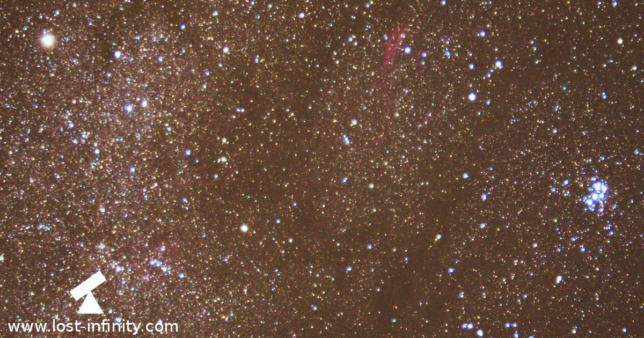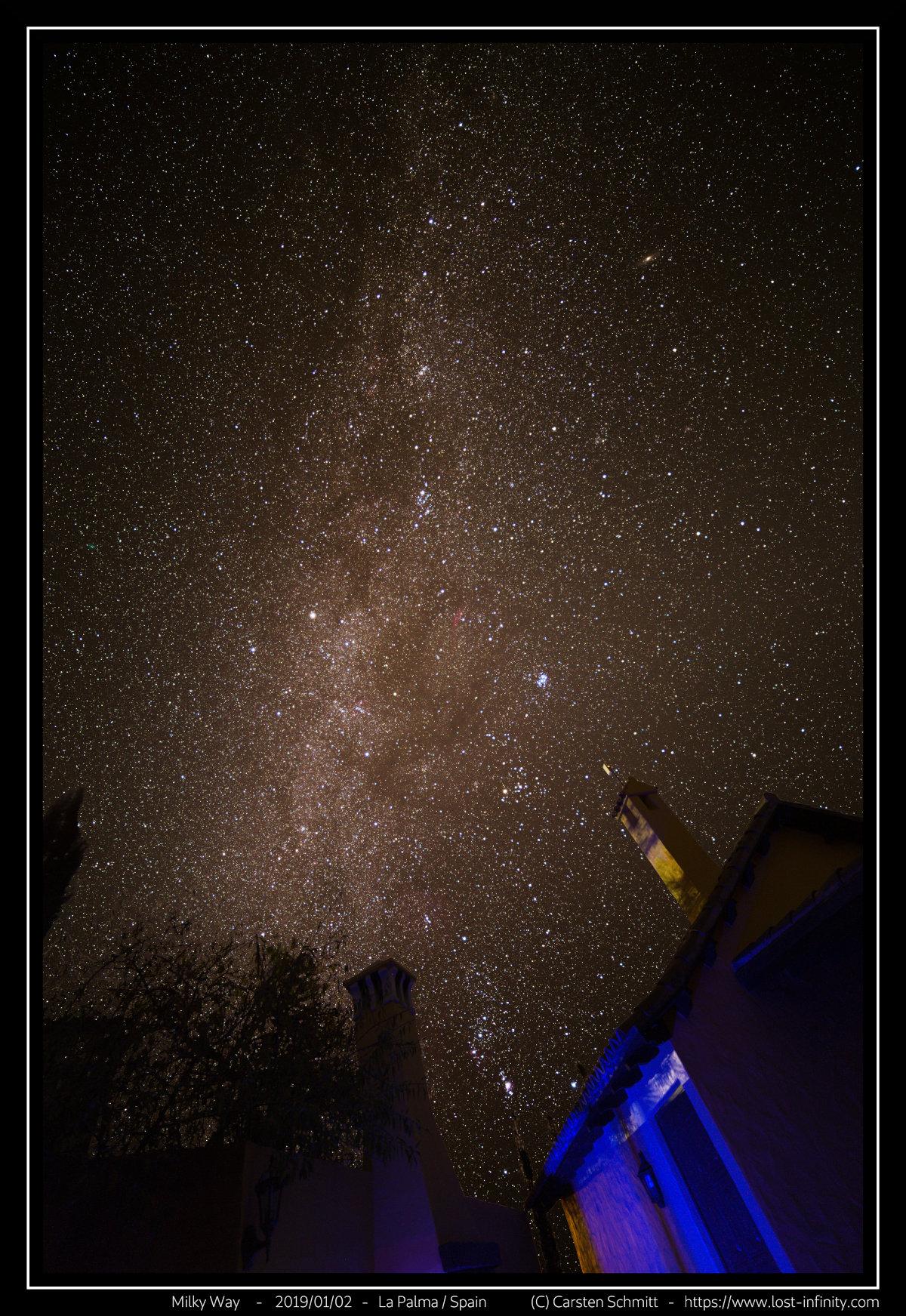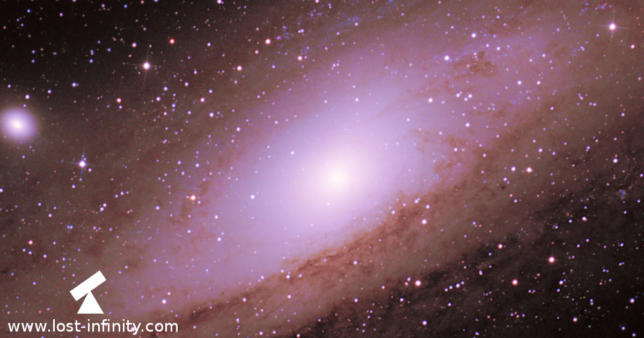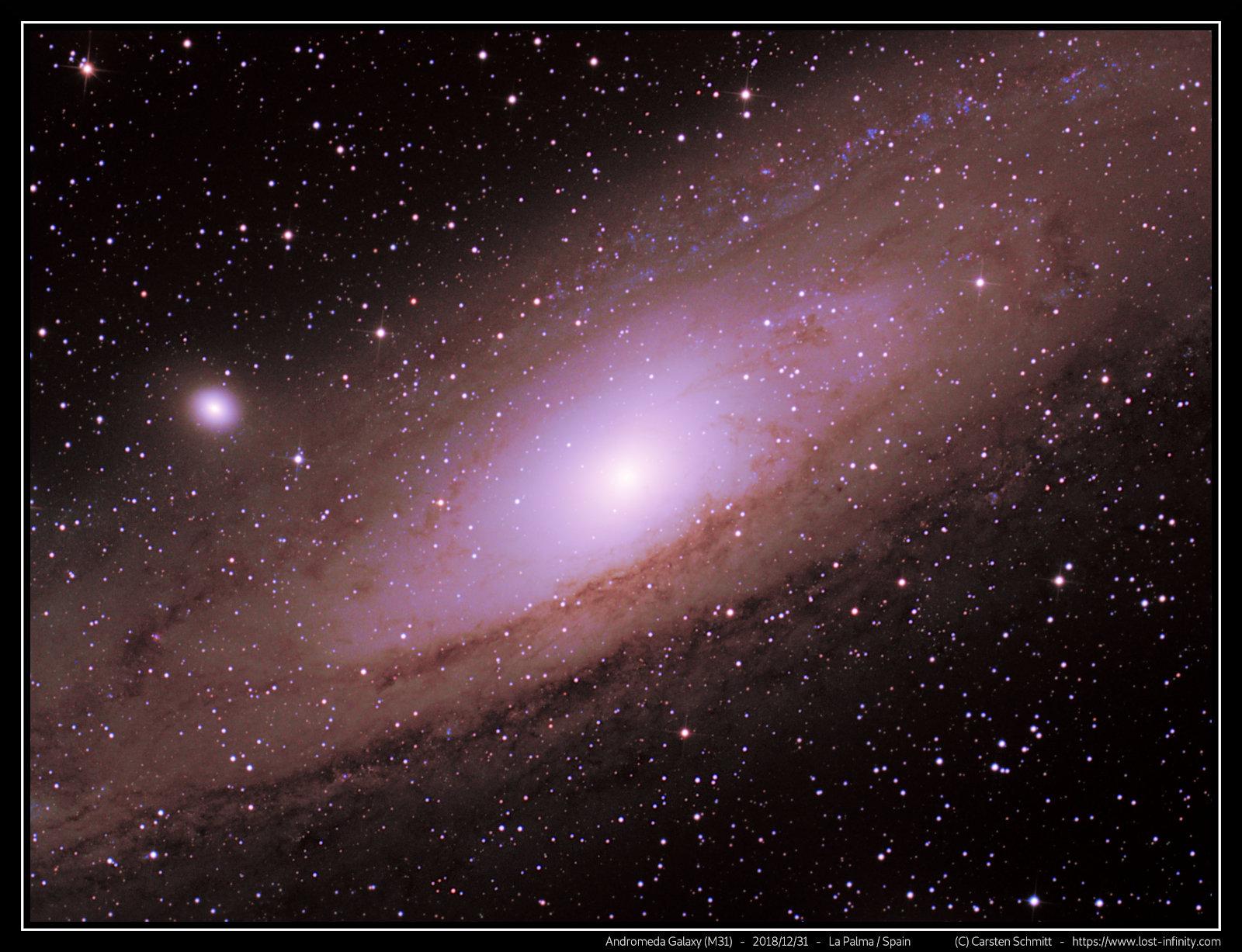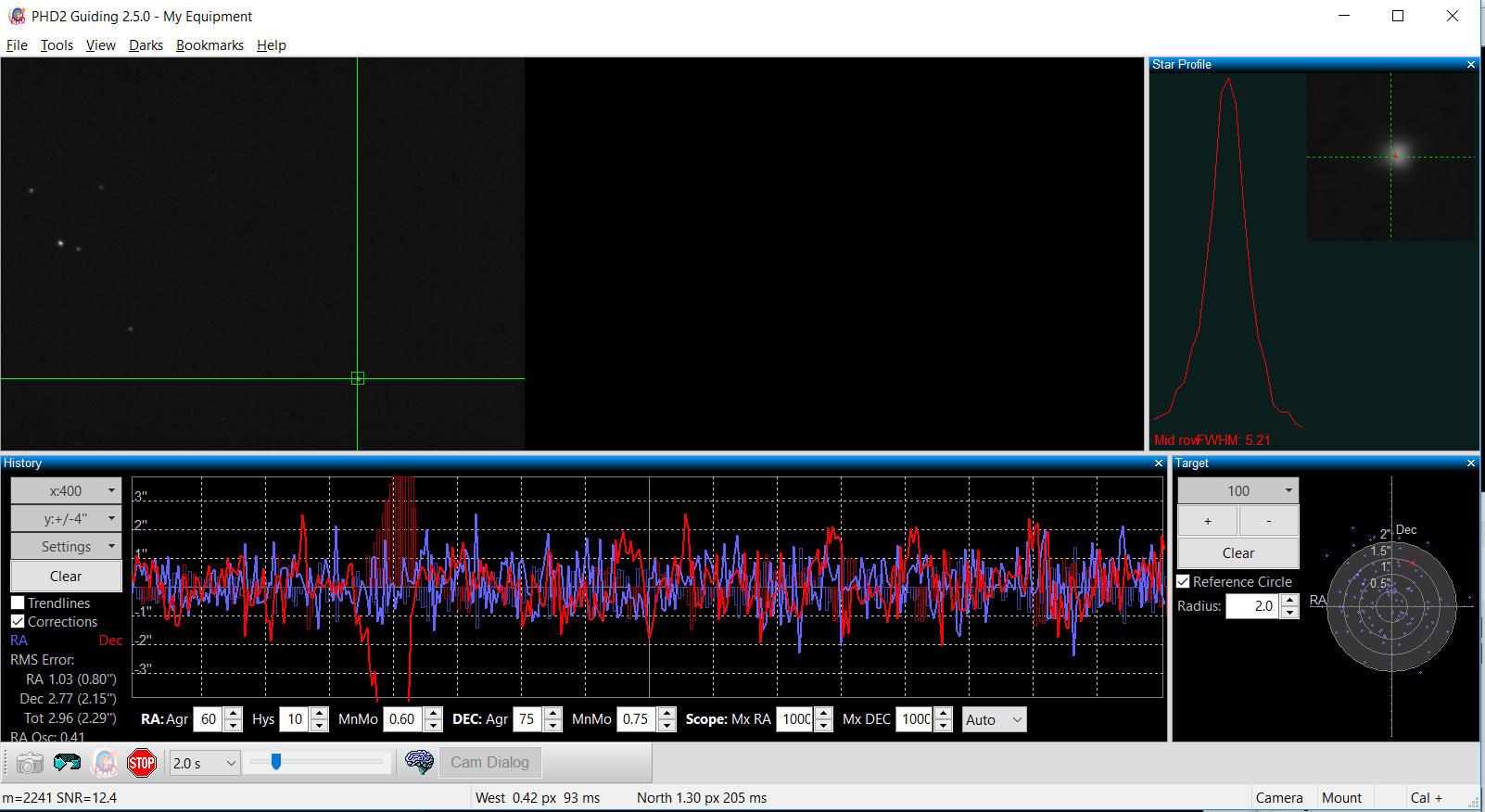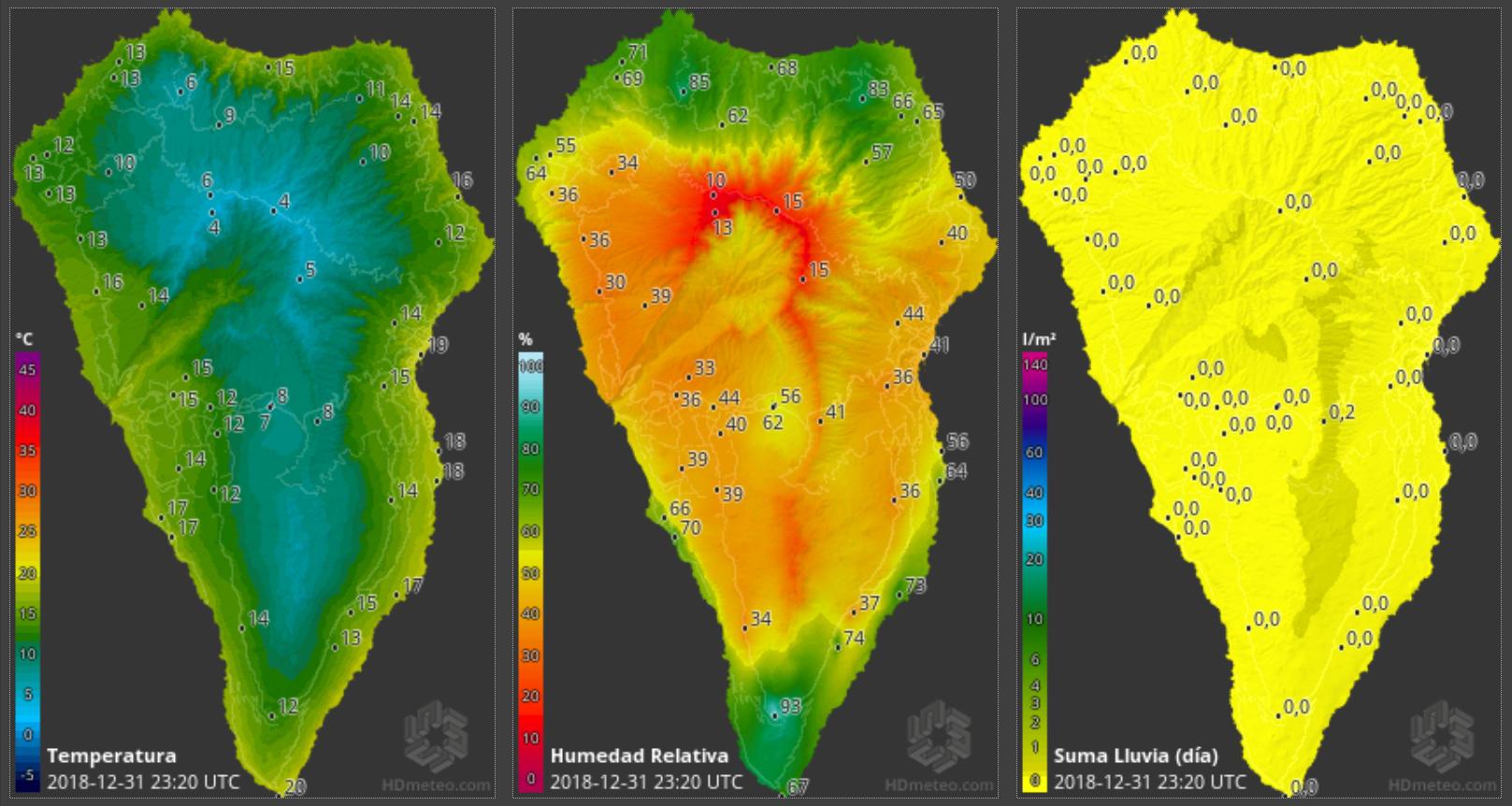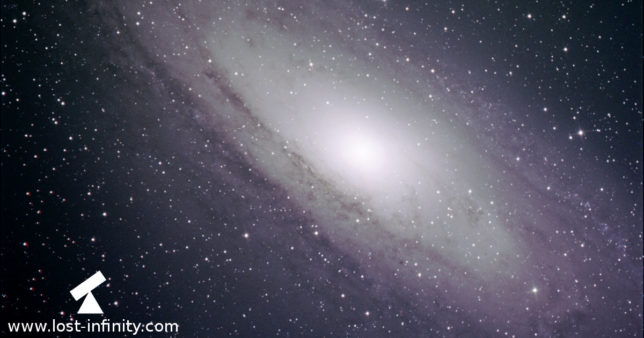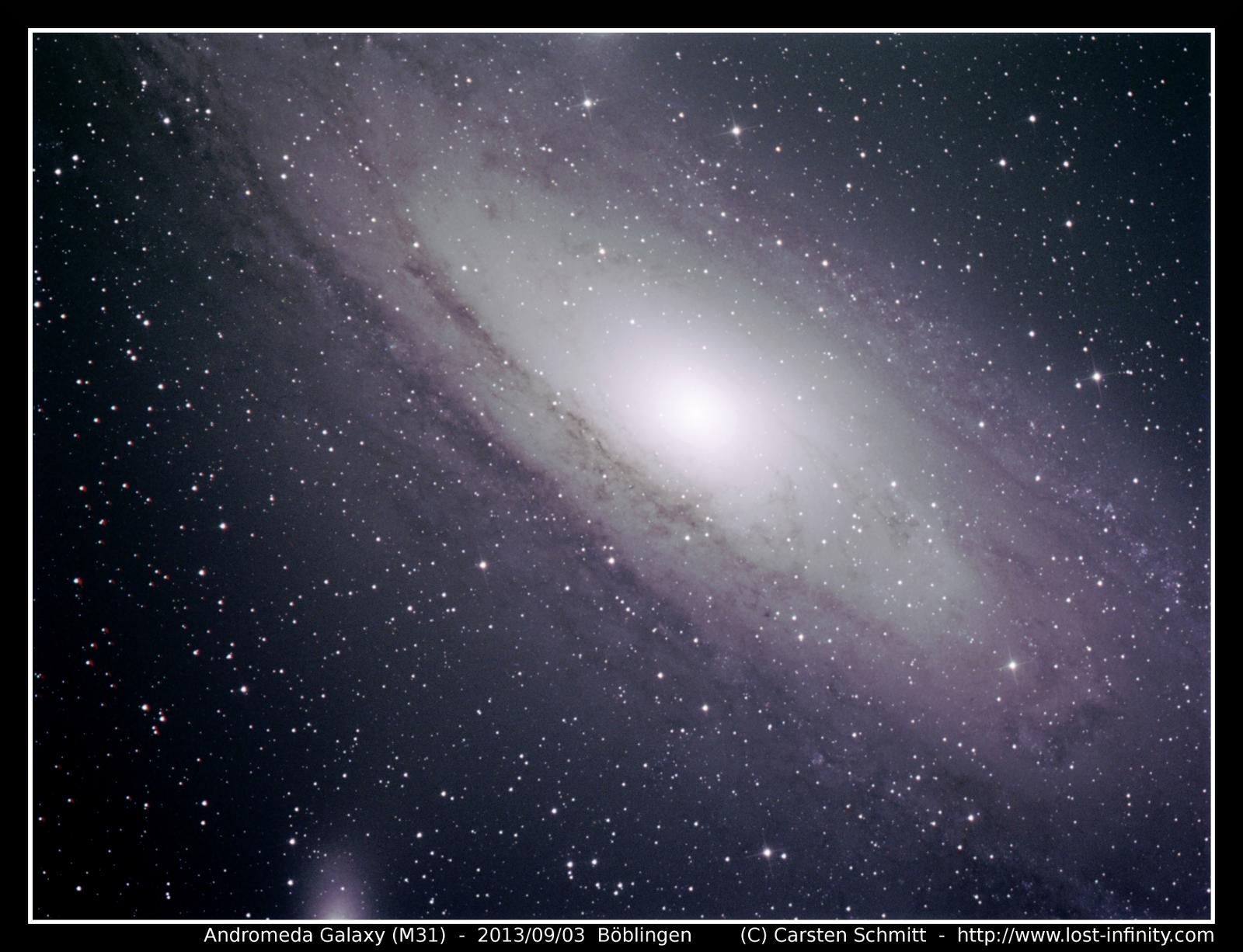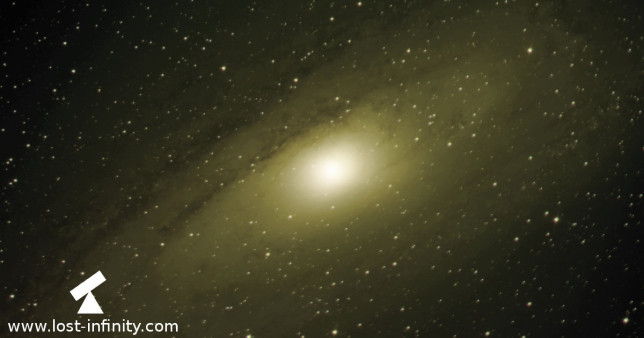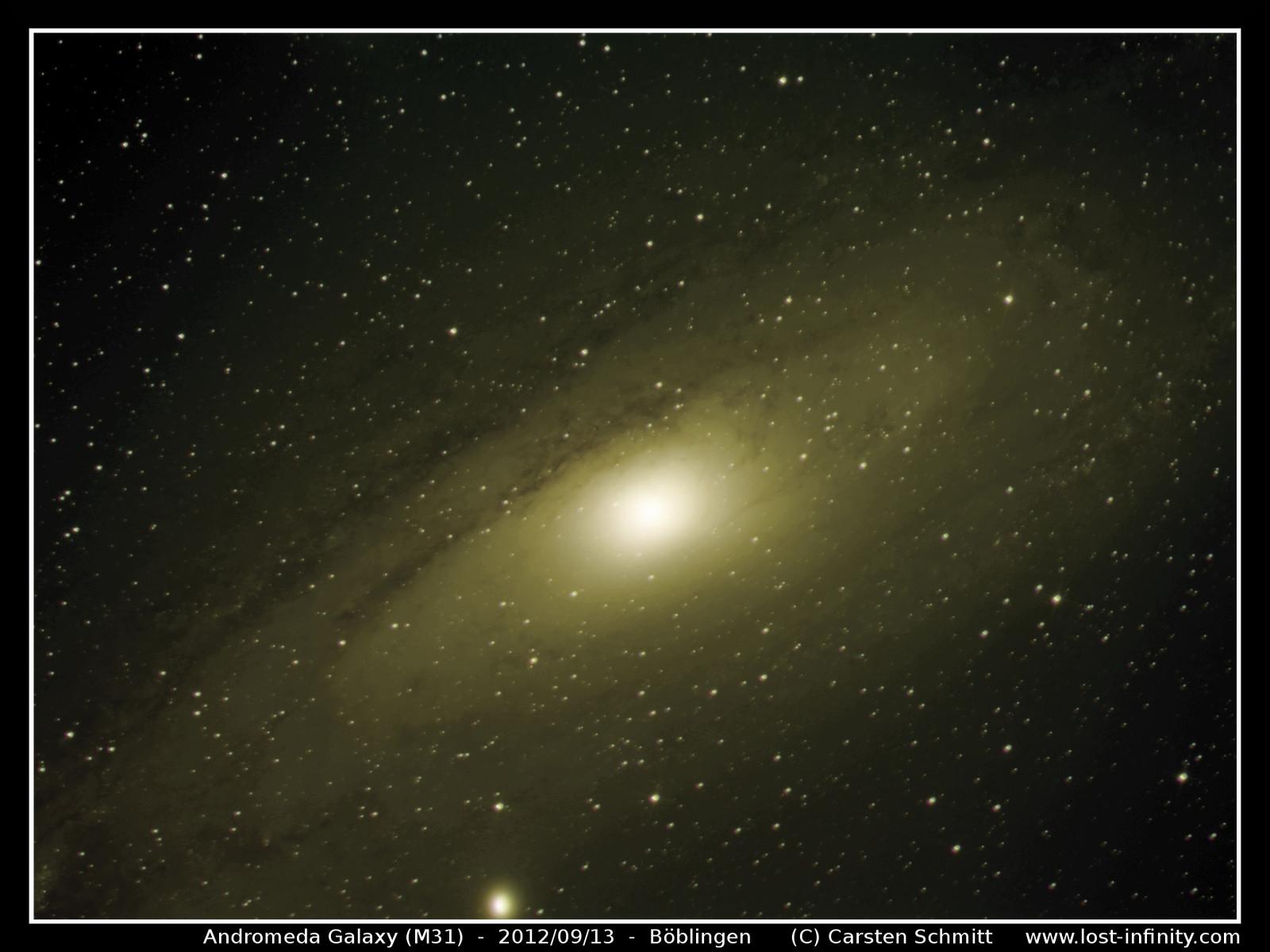 | Date | 2019/02/01 |
 | Location | La Palma / Spain |
 | Object | Milky Way |
 | Camera | EOS6D + Samyang 2.8/14mm |
 | Guiding | no |
 | Telescope | - |
 | Barlow lens | none |
 | Mount | EQ6Syntrek |
 | Cooling | - |
 | Luminance | 6x |
 | Red | - |
 | Green | - |
 | Blue | - |
 | Dark | 3x |
 | Flat | - |
 | Total exposure | ~15min. |
Once more back on La Palma / Spain. I imaged the Milky Way a few times before from this beautiful location. However, up to now I was always bound to a maximum exposure time of about 20 seconds due to the earth rotation. This time I decided to put the camera – an EOS6D with a Samyang 2.8/14mm lens – on top of an EQ6 mount. This way much longer exposure times with a lower ISO value (i.e. less noise in the image) were possible without getting any star trails. I took 6 frames with ISO 1600 á 148 seconds each. The total exposure time is therefore about 15 minutes.
The frames were then post-processed with rawtherapee and averaged using the ImageMagick “convert” tool. In addition 4 frames of the foreground (the house) were taken and also averaged (of course with disabled EQ6 mount). Finally the two pictures were overlaid and merged with the help of a mask using gimp.
To me it is amazing to see the Andromeda Galaxy (M31), the California Nebula (NGC1499), the Orion Nebula (M42), the Pleiades (M45) and the Horsehead Nebula (B33) clearly on this photo. This overview picture gives a good idea of the brightness, size and exact location of the objects compared to each other.
A full resolution image of the result can be found here. Another image without object descriptions can be found here. I am curious to repeat this procedure in summer when the bright part of the Milky Way will be visible again 🙂
Last updated: May 18, 2022 at 8:37 am




























